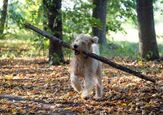You know your cat better than anyone. You’ve memorized the way they nap in their favorite sunspot, the sound of their little meow asking for breakfast, and the gentle purr that starts when you scratch under their chin. But recently, something has been off. Maybe you’ve noticed they are scratching a lot, their usually glossy coat is starting to look dull, or they are struggling with a digestive issue that seems to come and go. Whatever the concern, your first instinct is to find out why. If you’re here, you likely suspect the recent changes in your cat might be related to their food. That’s a great start – but what next? It’s easy to get lost in the sea of information, especially when you start hearing terms like “food allergy” and “food sensitivity” tossed around with no real definition of what they actually mean. If your cat’s condition is food-related, understanding the difference between these two conditions is the most important step you can take toward a real solution. This post will break down the science behind food allergies and sensitivities, help you recognize the signs of trouble, and outline a plan of action for working with your vet to get your kitty feeling their best again. Food Allergy vs. Food SensitivityTo understand how to help your cat, you need to know what’s happening inside their body after they eat. While the symptoms can often look similar, a food allergy and a food sensitivity are two very different conditions. The key difference lies in the body’s reaction to the food. A food allergy is an immune system reaction. This happens when your cat’s body mistakes a specific protein in a food as a dangerous invader. This mistaken identity triggers their immune system to launch a defensive attack, creating antibodies to fight off the perceived threat. The result is a chain reaction that releases inflammatory chemicals, like histamine, throughout the body. These chemicals are responsible for the symptoms we see, like intense itching, inflamed skin, ear infections, digestive problems, and other more severe complications. Allergies often develop after being exposed to an ingredient over a prolonged time. For example, a cat who has been eating the same chicken-based food for years might suddenly develop an allergy to the chicken protein. In contrast, a food sensitivity, or food intolerance, is strictly a digestive issue. The immune system is not involved. With a sensitivity, your cat’s digestive system simply struggles to break down and process a particular ingredient. This could be because they lack the specific enzyme necessary to break down the food or because the ingredient itself irritates their digestive tract. Either way, it leaves them feeling “off.” Luckily, because a sensitivity isn’t an immune reaction, the symptoms are generally less severe and are primarily confined to the digestive system. You’ll typically see vomiting, diarrhea, gas, or general discomfort in the abdomen. While a sensitivity isn’t going to affect the entire body like a food allergy can, it can still be very uncomfortable for your cat and significantly impact their quality of life. Food sensitivities can be immediate or can build up over time, gradually getting worse as they are exposed to the trigger. It’s always important to distinguish this from an allergy so you can take the right steps to give your cat much-needed relief. Red Flags to Watch Out For Noticing when something is “off” with your cat is one of the most critical parts of being a responsible pet parent. However, the symptoms of a food allergy or sensitivity can be sneaky and often overlap with other conditions. Knowing what to look for and how to distinguish between the two conditions can make a significant difference. Common Symptoms Shared by Both Many of the symptoms of food allergies and sensitivities are similar, which is why it can be so difficult to tell the two apart. The most frequent signs you may notice include: Skin Issues: This is one of the most common signs of trouble. You might see your cat scratching or licking excessively, which can lead to hair loss, red and inflamed skin, or small scabs, primarily around their head, neck, and ears. Digestive Distress: This includes vomiting, diarrhea, gas, or a general lack of appetite. While these can be caused by many things, when they are chronic and not easily explained, they may point to a food-related issue. Chronic Ear Infections: Recurring ear infections that don’t respond well to treatment or keep coming back are a classic sign of an underlying allergy. Recognizing Symptoms of a True Food AllergyWhile allergies can present with digestive issues, they often manifest with more widespread and intense symptoms due to the full-body immune response. Severity and Specific Location: The itching from a food allergy tends to be more severe and often localized to the face, ears, and neck. Constant scratching can cause damage to the skin, leading to secondary infections. Systemic Effects: In rare cases, a true allergic reaction can also lead to respiratory problems like sneezing or wheezing. You may also notice swelling, particularly around the face. Regardless of the cause, if your cat ever has difficulty breathing, it should be treated as an emergency requiring immediate veterinary attention. Symptoms More Indicative of a Food SensitivityA food sensitivity, or intolerance, may involve some minor skin irritation. However, the symptoms are much more focused on the digestive tract. Gastrointestinal Problems: With a sensitivity, diarrhea and vomiting are often the main concerns. The symptoms are the direct result of the body’s inability to properly digest the specific food or ingredient. These symptoms won’t typically be accompanied by the intense, widespread itching that is often seen with a food allergy. Less Widespread: Unlike an allergy, a sensitivity is generally confined to the digestive issues, meaning you are less likely to see any larger-scale skin reactions or other body-wide symptoms. Many of these signs can also be caused by other problems, such as hairballs, eating something they shouldn’t, or switching foods too quickly. They could also be a sign of intestinal parasites or health concerns, like pancreatitis, colitis, or a blockage caused by a foreign body. While you should avoid jumping to conclusions, the only way to know for sure what is causing your cat’s problems is to make an appointment with your veterinarian to get a proper diagnosis.

























